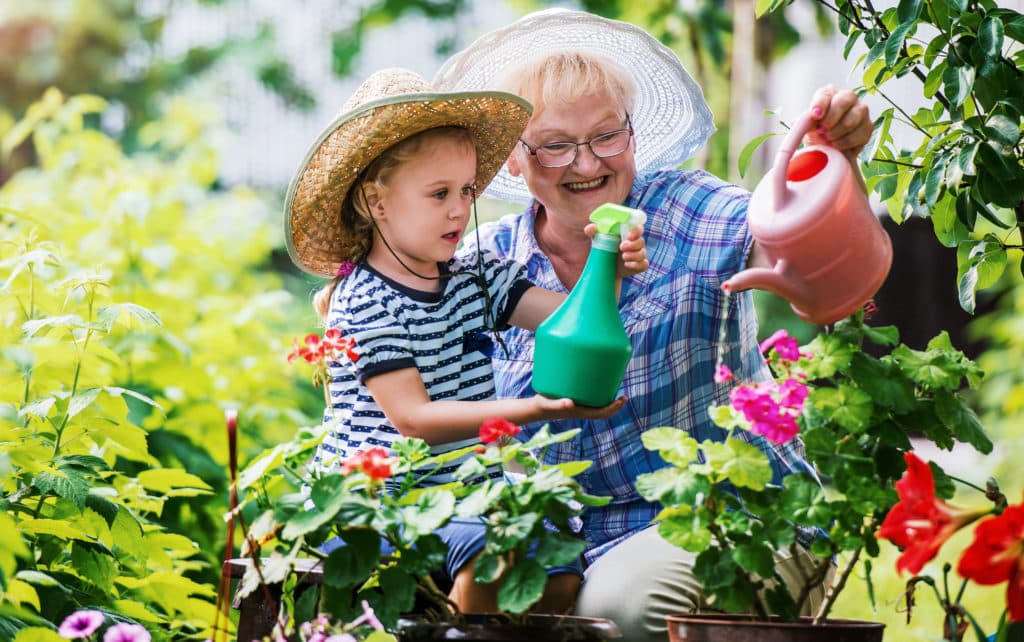
Bellevue PT Offers Back- and Joint-Friendly Gardening Tips for Seniors
After a long, cold, snowy winter many aging adults are looking forward to spring and being able to get back outside. For many individuals, tending to the garden is high on their list of priorities. Spring gardening and yardwork provides several benefits for aging adults, including connecting with the beauty of nature, physical activity and growing nutritious fruits and vegetables.
Gardening is an enjoyable activity many adults perform throughout life. However, reduced mobility, flexibility and pain caused by arthritis may make this difficult as individuals age. According to arthritis.org, an estimated 54 million American adults have been diagnosed with arthritis, creating potential barriers for individuals who desire to participate in challenging outdoor activities. This doesn’t have to be the case, says Sarah Blomenkamp, PT, of Hillcrest Physical Therapy in Bellevue.
A primary factor in managing arthritis is actually engaging in physical activity and exercise to help improve strength and stability. So if gardening is what you love, there are ways to help support the body while you garden.
“A lot of people stop gardening because maybe they have had some difficulty in the past,” Blomenkamp said. “If you are getting back into it, start slow and easy with just a few gardening tasks, such as potted plants for the porch. As your body adapts and tolerates it, you can keep adding a little more.”
Enjoy all the delights of gardening this year with the following tips from Blomenkamp:
Invest in supportive tools and equipment. Gardeners with bad knees can purchase a gardening mat or pad at outlets such as Ace Hardware, Walgreens, Menards, etc. If kneeling is painful, another modification is to use a small stool and garden while seated. Blomenkamp mentions that when rising from a kneeling position, it is helpful to use a nearby shovel or stool for support. For those who have arthritis in the fingers or wrists, check out a variety of adaptive and ergonomic tools that may be easier to grip.
Take frequent breaks, and pace yourself. With the first rays of sun, it can be tempting to spend all day in the garden as the days get longer, but it’s best to start slow. Perhaps potting flowers for the porch is a great first step. As the season progresses, the body builds tolerance to do more.
“Come up with a plan beforehand,” Blomenkamp said. “Say, ‘Today I’ll plant these flowers, and I’ll do these other things tomorrow.’ And write out a plan beforehand so as not to overdo. It’s more work, but it can be better on your body in the long run to plan ahead.”
Blomenkamp also suggests listening to your body and taking breaks. It can be helpful to set a timer for every 30 minutes as a reminder that it is time to stand, stretch, lie down or sit on a bench and take in the beauty of your garden.
Stretch and change positions. Gardening often involves repetitive motions, requiring you to bend over with the body in a forward flexing position. To help back and knee strain, Blomenkamp recommends stretching and extending the body before, during and after time in the garden. Stretches can include: standing tall and placing hands on the small of back for a gentle arching stretch; rotating the body to the left and right; squeezing the back shoulder blades together; circling the neck; and stretching the hamstring by sitting down and extending the leg and knee out straight.
Blomenkamp explains that it is important to be mindful of posture, use proper body mechanics when lifting or bending and to balance work with rest in order to fully enjoy your time in the garden this year.
To learn more, call (402) 682-4210.
